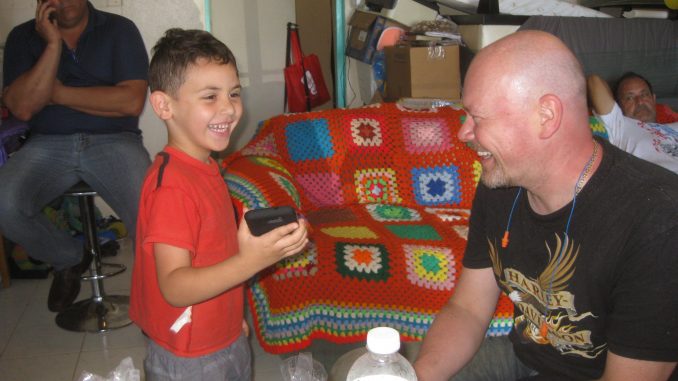
“It was the darkest day of my life,” mumbled Carlos, a 5-year-old boy who witnessed Hurricane Maria decimate his family’s home.
Less than two years ago, Hurricane Maria swept across Puerto Rico with unrelenting winds of 155 mph—uprooting trees, rupturing weather stations and cell towers and ripping roofs off homes.
Heavy rain and flash floods turned the streets of Puerto Rico into debris-filled, sewage-ridden and waist-high rivers. After bridges collapsed, some citizens were forced to cross roaring rivers in order to reach businesses where they could buy the necessities of water and gas.
Even though Hurricane Maria struck Puerto Rico back in 2017, the wounds this storm left are still fresh, and need more than just a Band-Aid.
On Tuesday, March 5, from 5 p.m. to 6:45 p.m., Dr. Wilma Feliciano, the professor emerita of Latin American studies at SUNY New Paltz, wished to address the persisting devastation Puerto Rico is experiencing from Hurricane Maria.
Feliciano’s lecture “Cultural Bonding: New Friendships and Memories After Hurricane Maria,” exhibited a 30-minute snapshot from the documentary “Rebuilding Puerto Rico,” made by ScuttleProductions.
“It’s not over,” Feliciano said. “I want people to understand that this is an ongoing situation, that just because it is not on the newspapers and televisions doesn’t mean it is resolved. There are people still living under blue tarps.”
The majority of the lecture was centered around the reconstruction efforts made by Feliciano’s brother-in-law, Jim Goodine. A retired contractor from Bennington, Vermont and a husband to a Puerto Rican wife, Goodine organized a repair mission of 24 volunteers—the VT2PR Team—to go to Las Marias, Puerto Rico to rebuild four houses, and raised private contributions under the auspices of Habitat for Humanity.
“If you went to the coast in Puerto Rico, you could sit at the bar, you could sit at the beach with a drink with an umbrella in it, and you’ll never know what is happening 20 minutes away,” Goodine said.
Out of Las Marias’ 10,000 people population, 2,000 people have evacuated.
“The people who left, something like 200,000 people left Puerto Rico during and after the hurricane, were the teachers, the doctors, the engineers—the people who could help rebuild the island. It is a brain drain,” Feliciano said.
In the 18 months after the hurricane, 200 Las Marias homes are still under blue tarps.
“If you can imagine a community of 10,000 around here, and after a year and a half, they still have 200 without a roof on them—it would be a national disaster,” Goodine said.
The storm disproportionately affected Puerto Rico’s poorest residents—the majority living in more rural communities and hard-to-reach mountainous areas.
“The federal government was not as helpful as it could be. It did not give anywhere near the amount to Puerto Rico than it did to Hurricane Harvey in Houston or Hurricane Irma in Florida, but the situation is still dire for poor people. The poorest of the poor are always the last to get the aid,” Feliciano said.
Ironically, the VT2PR team’s biggest obstacle was FEMA. The promised materials by FEMA arrived three days late, and were insufficient for the four houses being rebuilt.
“You could see some of the anger from our volunteers, they just couldn’t believe that we couldn’t get the stuff,” Goodine said. “I felt bad because all my communication with them was we’ll have it on the ground for you, it’s under a tarp, just pull the tarp and you’re good to go.’ Ha, they haven’t even bothered with it.”
FEMA also prevented the team from unloading building materials shipped from outside the U.S.
“It’s easy to sit in Washington and say ‘Puerto Rico should only use American products, that will really stimulate their economy.’ Meanwhile, people don’t have a roof over their heads there. It’s ridiculous,” Goodine said.
“That’s why I’m going around FEMA this year, it may be easier for me to raise the money than deal with them,” he continued.
Despite these downfalls, Feliciano and Goodine focused the presentation on the cultural exchanges between the hurricane’s victims and the volunteers, which ultimately ignited human kinship.
“When I explained to her that there is a group of volunteers coming to fix her roof, she stayed mute and started crying. She told me everyone has forgotten about her. She broke my heart,” said Deloys, the VT2PR’s “agent” in Puerto Rico, in regards to a homeowner who wishes to remain anonymous.
One of Goodine’s major takeaways from his experience in Las Marias was that people were steadily running out of hope.
“That’s a horrible thing,” Goodine said. “One lady is keeping all of her clothing in plastic bags now because she doesn’t have a dresser or anything. She had completely lost hope. She just started to cry and cry and cry that someone was actually going to come and help.”
Responding to what the future looks like for Puerto Rico, Goodine said, “I think it’s kind of grim.”
The damaging and traumatizing effects of the hurricane will surely haunt residents for years to come. Thankfully, on April 1, Goodine will lead a team of 36 volunteers Habitat for Humanity volunteers to continue rebuilding homes for survivors of Hurricane Maria.
If you are feeling the call to help, please send donations to “Habitat for Humanity; Hurricane Maria Relief Fund; P.O. Box 1159; Manchester, VT 05254.” Muchas gracias.

